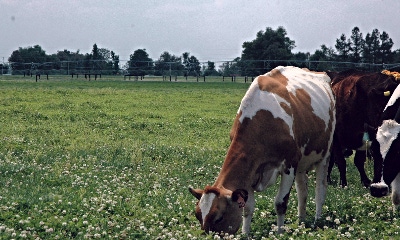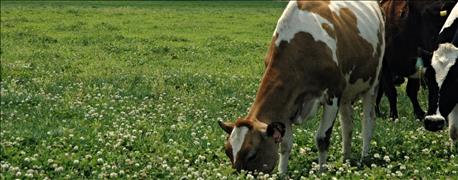May 15, 2016

Legumes make good additions to livestock pastures, up to a point. Too much can cause "slobbers."
"So far this has been a white clover spring; that can bring problems," says Craig Roberts, University of Missouri Extension forage specialist.
When livestock, especially horses, eat too much of the small legume it brings on excessive saliva.
The problem
It's not the clover but a fungus that grows on legumes in excessively wet summers, Roberts said. "This year some grass pastures look as though they have become clover fields."
"Some fields may look like 80% clover," he says. "On a dry matter basis it may only be 30%."

SLOBBERY SPRING: Clover is causing problems for livestock and horses this summer. A wet spring created ideal growing conditions for legumes. Farmers need to watch for excess saliva in animals and take action.
In the past, excessive growth in wet years brought on the condition caused by a mycotoxin from a fungus, Rhizoctonia.
The fungal growth on legumes is called "black patch." That name comes from black spots, or even dots, on legume leaves. The impact is not limited to white clover.
The fungus can affect all legumes from alfalfa to soybeans.
Large animals, such as horses, seem affected the most. However, even goats get "slobbers."
The fix
The remedy is to move livestock to another pasture. If that's not possible, feed dry grass hay to dilute the toxin.
"I've not seen it this year," Roberts said. "Just alert farmers to be on the lookout."
To use the weather terms, he says, it is a "watch," not a "warning."
Local MU Extension agronomists can assist with identification, or they can help in sending plant samples to the MU Plant Diagnostic Clinic.
Source: University of Missouri Extension
You May Also Like




